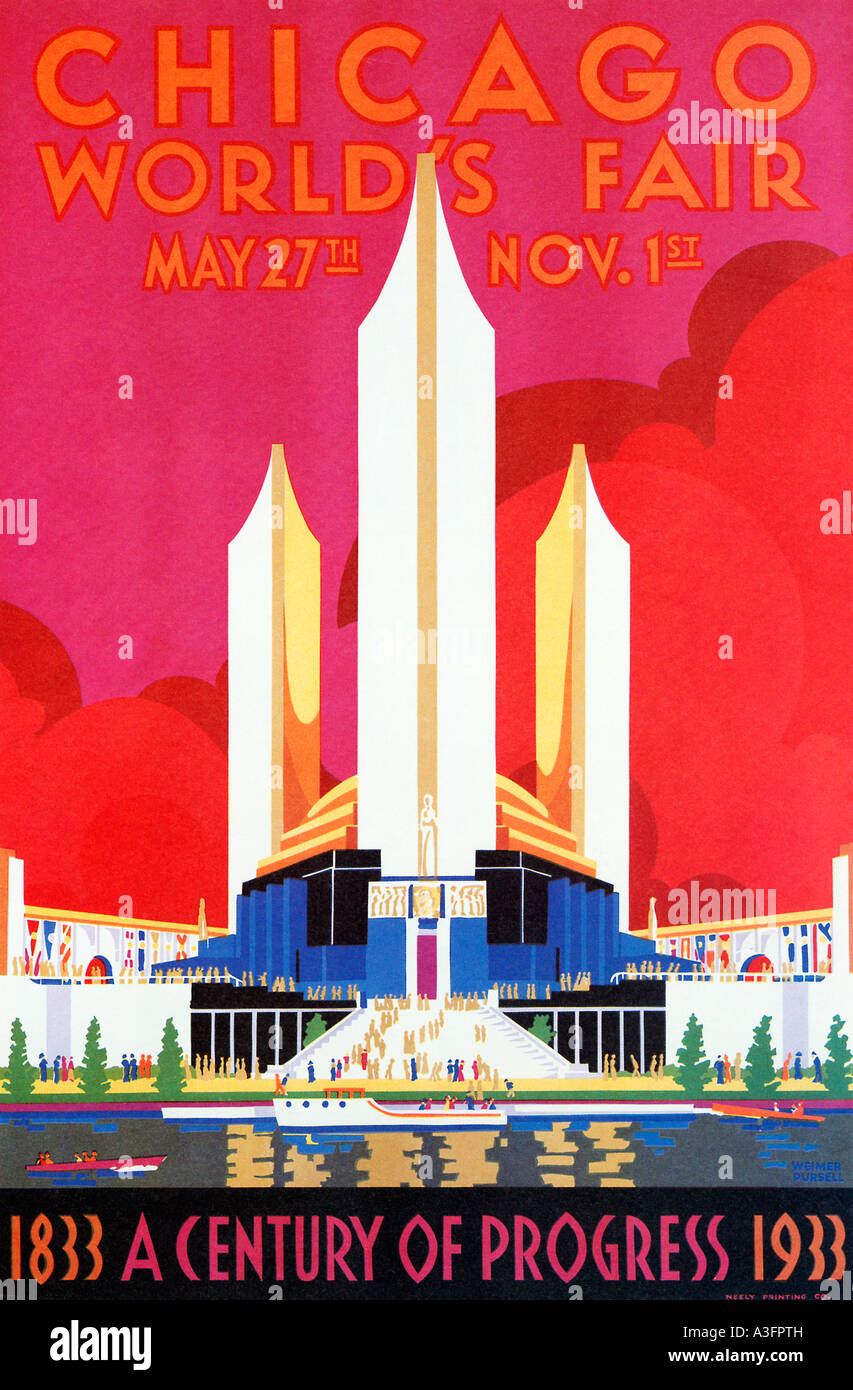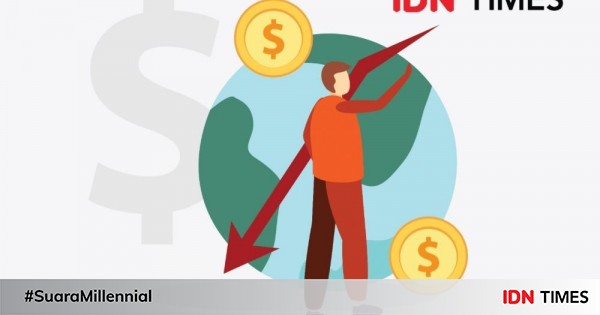Chicago's Century Of Progress: World's Fair Opens In 1933

Table of Contents
The Dawn of a New Era: Planning and Purpose of the 1933 World's Fair
Overcoming the Great Depression
Chicago's Century of Progress served as a crucial symbol of hope amidst the despair of the Great Depression. The fair's organizers envisioned it as a means to revitalize the city's economy and lift national spirits. The ambitious project proved to be a significant undertaking, requiring substantial planning and resource allocation.
- Job Creation: The construction and operation of the fair provided thousands of much-needed jobs, offering employment to many struggling during the economic downturn. Estimates suggest the fair created tens of thousands of jobs, directly and indirectly.
- Tourism Boost: The allure of the Exposition attracted visitors from across the nation and the world, injecting much-needed revenue into the local economy through tourism spending on accommodation, food, entertainment, and transportation.
- Economic Stimulus: The fair's impact extended beyond immediate employment. The influx of visitors stimulated related industries, helping to revitalize businesses and foster a sense of optimism that was desperately needed during those bleak years.
Technological Marvels and Innovations Showcased
Chicago's Century of Progress was a showcase of groundbreaking technological advancements. Visitors were amazed by the latest innovations, demonstrating the potential for a brighter future.
- Early Television: The fair provided early demonstrations of television technology, offering a glimpse into the future of entertainment and communication.
- Air Conditioning: The introduction of air conditioning technology was a major highlight, demonstrating its potential to transform living and working conditions.
- Transportation Advancements: The fair showcased advancements in automobile design and aviation, reflecting the rapid pace of technological progress during the era. Scientific advancements in various fields were also showcased, highlighting the power of innovation.
Architectural Wonders and Art Deco Designs at the Fair
The Architectural Style of the Fair
The architectural style of Chicago's Century of Progress was heavily influenced by the prevailing Art Deco aesthetic. The fairgrounds featured numerous iconic structures that embodied this distinctive style, leaving an enduring mark on Chicago's skyline.
- Iconic Buildings: The fair's buildings featured streamlined designs, geometric shapes, and decorative motifs characteristic of Art Deco. Many incorporated innovative construction materials and techniques.
- The Hall of Science: A stunning example of Art Deco architecture, this building housed numerous exhibits showcasing scientific advancements.
- The Sky Ride: An aerial cable car system offered spectacular views of the fairgrounds and the city, further contributing to the futuristic atmosphere. The Art Deco influence extended to smaller structures and decorative elements throughout the site.
Artistic Expressions and Cultural Exhibits
Beyond its technological marvels, Chicago's Century of Progress provided a platform for diverse artistic and cultural expressions. The fair featured a wide range of exhibits, performances, and installations that reflected the creativity and dynamism of the era.
- Art Installations: Numerous art installations and exhibitions were showcased, offering a wide range of artistic styles and viewpoints.
- Music and Dance: The fair featured live music performances, dance recitals, and theatrical productions that captivated audiences. Many celebrated American culture, while others presented international artistic traditions.
- Cultural Exhibits: Exhibits highlighted different cultures, fostering intercultural exchange and promoting understanding among visitors.
Legacy and Lasting Impact of Chicago's Century of Progress
Long-Term Effects on Chicago
Chicago's Century of Progress left a lasting impact on the city's landscape, culture, and economy. Its legacy continues to resonate even today.
- Architectural Legacy: The Art Deco architecture of the fair influenced subsequent building designs, shaping the city's skyline and contributing to its unique architectural character.
- Tourism Boom: The success of the fair established Chicago as a major tourist destination, further bolstering its economy and expanding its global profile.
- Infrastructure Development: The construction of the fair spurred infrastructure improvements, including transportation networks and public amenities, which benefited the city for years to come.
The Fair's Place in History
Chicago's Century of Progress holds a significant place in 20th-century history, particularly within the context of the Great Depression. The fair served as a powerful symbol of hope, resilience, and technological advancement during a time of national and global uncertainty.
- Technological Progress: The fair played a crucial role in popularizing new technologies and fostering a sense of optimism about the future.
- Cultural Exchange: It fostered intercultural exchange and offered a unique opportunity to showcase diverse artistic and cultural expressions from around the world.
- National Morale: The fair's success played a significant role in boosting national morale during a time of economic hardship, offering a brief respite from the grim realities of the Depression.
Conclusion: Remembering Chicago's Century of Progress
Chicago's Century of Progress was more than just a World's Fair; it was a transformative event that left an indelible mark on Chicago and the nation. It served as a potent symbol of hope and progress during the darkest days of the Great Depression, showcasing remarkable technological innovations and fostering a sense of optimism about the future. Its lasting impact can still be seen in Chicago's architecture, its thriving tourism industry, and its cultural identity. Discover more about the remarkable achievements of Chicago's Century of Progress and its enduring legacy. Explore the rich history of this pivotal World's Fair and learn how it shaped the city we know today. Visit the Chicago History Museum or other relevant resources to delve deeper into this fascinating chapter of Chicago's past.

Featured Posts
-
 Koster Minta Bps Tak Masukkan Canang Sebagai Komoditas Inflasi
May 28, 2025
Koster Minta Bps Tak Masukkan Canang Sebagai Komoditas Inflasi
May 28, 2025 -
 Wes Andersons The Phoenician Scheme A Cannes Film Festival Review
May 28, 2025
Wes Andersons The Phoenician Scheme A Cannes Film Festival Review
May 28, 2025 -
 Winning Lottery Ticket Remains Unclaimed Winning Shop Revealed
May 28, 2025
Winning Lottery Ticket Remains Unclaimed Winning Shop Revealed
May 28, 2025 -
 Mc Kenna Injury Update Philogene Blow For Ipswich Town
May 28, 2025
Mc Kenna Injury Update Philogene Blow For Ipswich Town
May 28, 2025 -
 Kawin Kontrak Di Bali Fakta Dampak Dan Solusi Atas Permasalahan Properti
May 28, 2025
Kawin Kontrak Di Bali Fakta Dampak Dan Solusi Atas Permasalahan Properti
May 28, 2025
